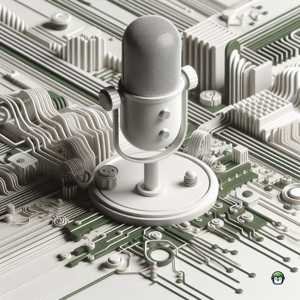Analog microphone sensors are essential components in modern audio applications, ranging from professional studios to DIY electronics projects. When paired with an ESP32 microcontroller running MicroPython, these sensors enable sound-based applications like voice recognition, environmental monitoring, and IoT solutions. By understanding how an analog microphone sensor works and how to integrate it with an ESP32, developers can create efficient and responsive sound-processing projects.
This article delves into the principles behind analog microphone sensors, their key use cases, and a step-by-step guide on connecting them to an ESP32. With a simple wiring setup and a few lines of MicroPython code, users can capture and process sound data for various applications, making the analog microphone sensor a valuable tool in embedded development.
Datasheet:
Table of Contents
What is an Analog Microphone Sensor?
An analog microphone sensor is a device that converts sound waves into an analog electrical signal. Unlike digital microphones that process audio into a binary format, an analog microphone sensor produces a continuous signal that represents the variations in sound waves. These sensors are commonly used in audio processing, speech recognition, and noise monitoring applications.
How Does an Analog Microphone Sensor Work?
The basic principle of an analog microphone sensor is straightforward: it converts mechanical sound waves into an electrical signal. This is achieved through the following components:
- Diaphragm – A thin membrane that vibrates when exposed to sound waves.
- Transducer Element – Converts the diaphragm’s vibrations into an electrical signal. Common types include:
- Electret Condenser Microphones: Utilize a permanently charged capacitor to detect sound.
- Dynamic Microphones: Use a coil and magnet to generate an electrical signal.
- Preamp Circuit – Most analog microphone sensors include a small amplifier to boost the weak signal for better processing by the ESP32’s ADC (Analog-to-Digital Converter).
Use Cases for an Analog Microphone Sensor with ESP32
Integrating an analog microphone sensor with an ESP32 running MicroPython enables various applications, such as:
- Sound Level Monitoring: Measure environmental noise levels and trigger alerts if thresholds are exceeded.
- Voice Activation: Detect speech patterns for smart home automation.
- Acoustic Signal Processing: Analyze audio frequencies for different sound-based applications.
- IoT Applications: Send sound-related data to the cloud for further analysis.
Connecting an Analog Microphone Sensor to ESP32
To interface an analog microphone sensor with the ESP32, follow these steps:
- Wiring:
- Connect the microphone sensor’s VCC to the ESP32’s 3.3V.
- Connect the GND to the ESP32’s GND.
- Connect the analog output (AOUT) of the sensor to one of the ESP32’s ADC pins (e.g., GPIO 36).
- MicroPython Code Example:
from machine import ADC, Pin
import time
mic = ADC(Pin(36)) # Connect AOUT to GPIO 36
mic.atten(ADC.ATTN_11DB) # Set attenuation for 0-3.3V range
while True:
sound_level = mic.read()
print("Sound Level:", sound_level)
time.sleep(0.1)Why Choose an Analog Microphone Sensor with ESP32?
Even with the availability of digital microphones, analog sensors offer several benefits when paired with an ESP32:
- Simple Interface: Works directly with ESP32’s ADC without requiring complex signal processing.
- Low Power Consumption: Ideal for battery-powered IoT applications.
- Cost-Effective: Analog microphone sensors are widely available and affordable.
- Versatility: Can be used in various applications from noise detection to speech-based control.
Conclusion
An analog microphone sensor is a powerful and versatile component for ESP32-based projects, enabling real-time sound processing for IoT, automation, and monitoring applications. By leveraging MicroPython and the ESP32’s ADC capabilities, developers can easily integrate sound detection into their projects. Whether for noise monitoring, voice activation, or audio analysis, the analog microphone sensor remains a reliable and cost-effective solution for sound-based embedded applications.
You might also want to check these:
- eBook Library Themes and Plugins: Customizing Your Digital Collection
- Benefits of Self-Hosting eBooks: Why It’s the Best Choice for Your Library
- DIY Karaoke Videos with FFmpeg and SRT: Format, Sync, and Style
- Automate Chord Transcription Using Sonic Annotator and Vamp Plugins on macOS (Terminal)
- Efficiently Manage Playback Sound in Ubuntu Using mpg321
- How to Use Google Text-to-Speech (gTTS) for Fast and Natural Speech Synthesis in Ubuntu
- How to Pause and Play cvlc from the Terminal
- Convert WAV Files to Text Using Whisper API
- Audiobook Heaven: Setting Up Your Self-Hosted Audio Library
- Self-Hosted Audiobook Library: Tools and Best Practices
- Audio Segmentation: A Simple Guide to Splitting Long Audio Files with FFmpeg
- How to Use cvlc to Play Audio from the Terminal
- How to Use Whisper CLI for Audio Transcription and Translation



Leave a Reply